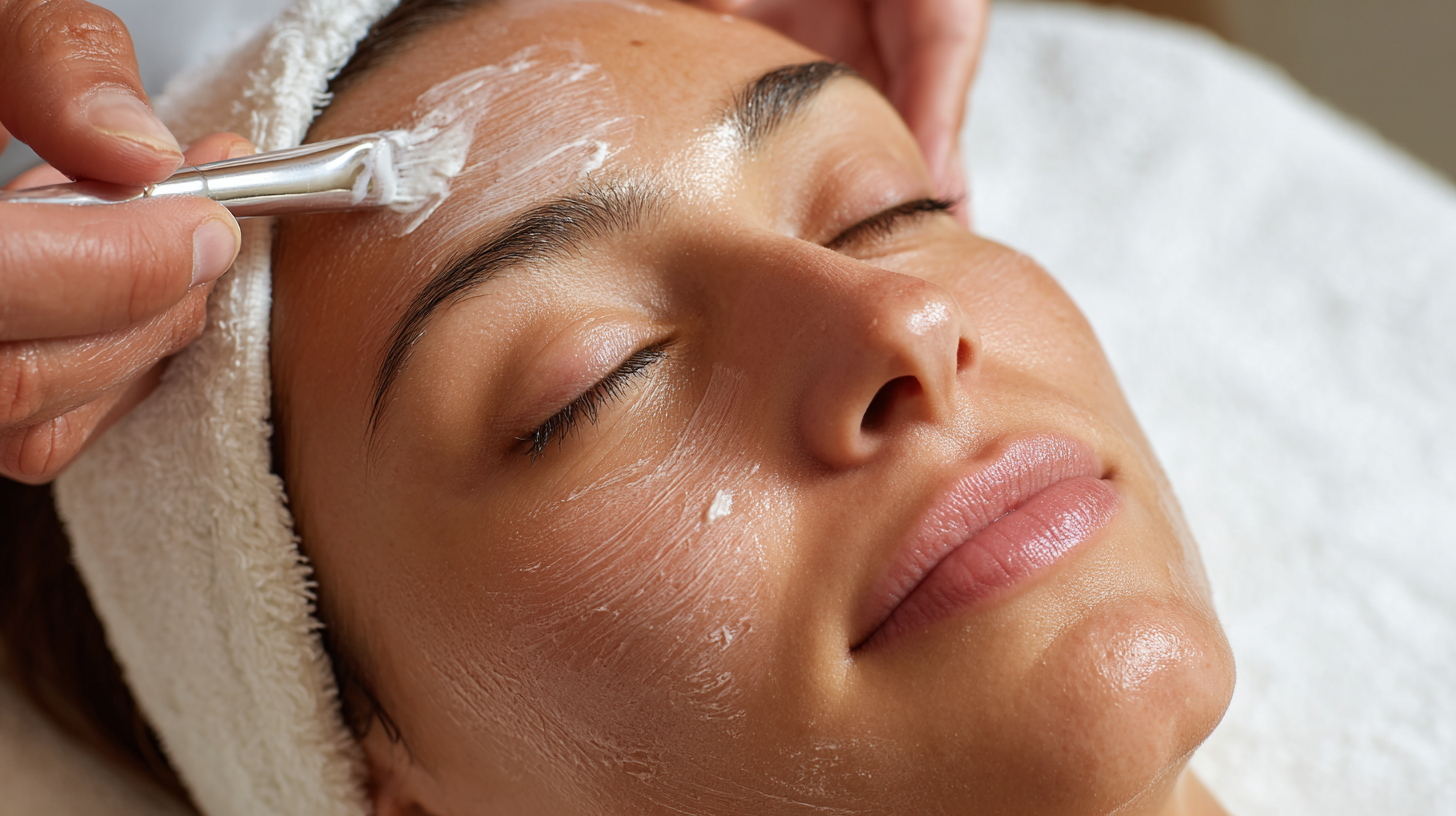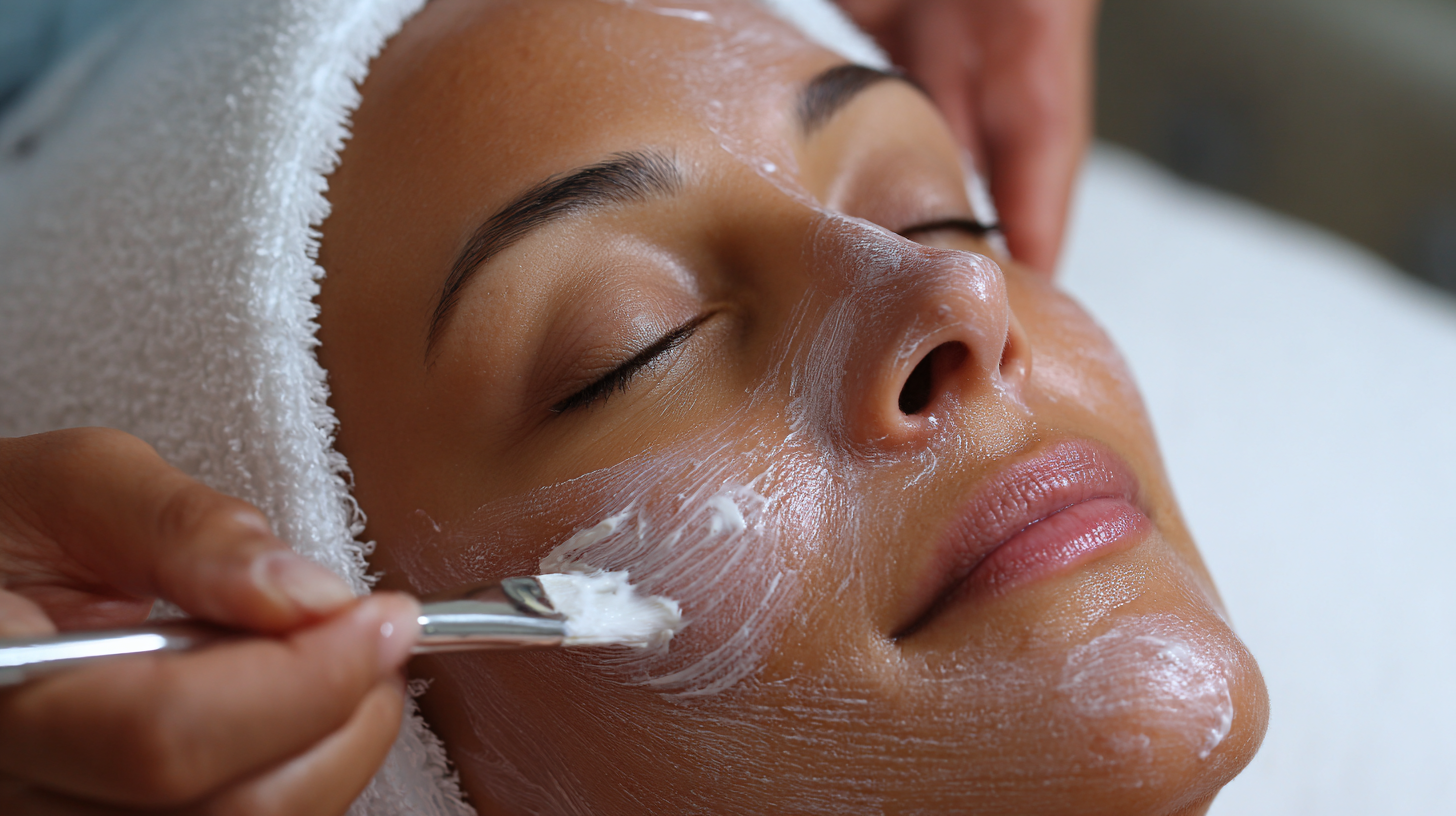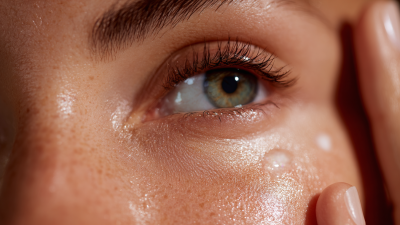![]() 3606 E. Chapman Ave, Orange, CA 92869
3606 E. Chapman Ave, Orange, CA 92869
![]() Contact us: 714-743-4914
Contact us: 714-743-4914
![]() 3606 E. Chapman Ave, Orange, CA 92869
3606 E. Chapman Ave, Orange, CA 92869
![]() Contact us: 714-743-4914
Contact us: 714-743-4914
How to Choose the Right Facial Peels for Your Skin Type and Concerns
When it comes to achieving radiant and healthy skin, selecting the right facial peels can be a game-changer. According to Dr. Emily Stein, a renowned dermatologist and expert in skin care treatments, "The key to effective facial peels is understanding your skin type and the specific concerns you want to address." With a plethora of options available, including glycolic, salicylic, and lactic acid peels, it can be overwhelming for individuals to determine which one is best suited for their unique skin needs.

Facial peels not only help in exfoliating the skin but also target issues such as acne, hyperpigmentation, and signs of aging. Personalization is crucial; a peel that works wonders for one person may not yield the same results for another. This guide aims to demystify the process of selecting facial peels, exploring various types while providing insights on how to match them with different skin types and concerns. By taking the time to understand your skin’s needs, you can enhance your skincare routine and achieve the glowing complexion you desire.
Understanding Different Types of Facial Peels and Their Benefits
Facial peels are a popular skincare treatment, offering a range of benefits tailored to different skin types and concerns. According to a report from the American Society for Dermatologic Surgery, about 50% of consumers seeking cosmetic procedures consider chemical peels, recognizing their effectiveness in enhancing skin texture and tone. Chemical peels can be categorized into three main types: superficial, medium, and deep. Superficial peels use mild acids like alpha-hydroxy acids (AHAs) to exfoliate the outer layer of skin, making them ideal for individuals with dry or sensitive skin. These peels can improve mild discoloration and rough texture, with minimal downtime.
On the other hand, medium peels typically employ trichloroacetic acid (TCA) or salicylic acid, effectively treating sun damage, acne scars, and fine lines. Data from the American Academy of Dermatology indicates that medium peels have a desirable balance of efficacy and recovery time, often resulting in noticeable improvements without the extensive downtime required by deep peels.
Deep peels, which penetrate the skin at a more profound level using phenol, are best suited for more severe skin issues like deep wrinkles and significant sun damage; however, they also come with a longer recovery period. Understanding the various types of peels is essential for selecting a treatment that aligns with one’s specific skin concerns and desired outcomes.
Identifying Your Skin Type: Key Characteristics and Concerns
Understanding your skin type is crucial for optimizing your skincare regimen and achieving the best results. Dermatologists categorize skin into five main types: oily, dry, normal, combination, and sensitive. Each type has distinct characteristics; for instance, oily skin often appears shiny and may be prone to acne, while dry skin feels tight and may show flakiness. A recent cross-sectional study examined young women in China, revealing that 30% of participants had oily-sensitive skin, indicating a significant prevalence of this subtype. Proper identification allows for targeted treatment and product selection tailored to individual needs.
Advancements in technology, such as AI-driven skin type tests, are revolutionizing how we determine our skin’s characteristics. Devices that utilize high-resolution imaging and machine learning algorithms can provide more accurate assessments than traditional methods. This innovation has led to personalized skincare routines supported by data-driven insights, ensuring that individuals select products that align precisely with their skin’s requirements. As we approach 2025, the integration of these technologies promises enhanced customization in skincare, helping users effectively address various concerns, from acne to premature aging.
How to Choose the Right Facial Peels for Your Skin Type and Concerns
| Skin Type | Key Characteristics | Common Concerns | Recommended Peel Type |
|---|---|---|---|
| Oily Skin | Shiny appearance, enlarged pores | Acne, blackheads | Salicylic Acid Peel |
| Dry Skin | Flaky, rough texture | Dry patches, tightness | Lactic Acid Peel |
| Combination Skin | Oily in T-zone, dry on cheeks | Uneven texture, breakouts | Glycolic Acid Peel |
| Sensitive Skin | Thin, easily irritated | Redness, irritation | Mandelic Acid Peel |
| Normal Skin | Balanced, smooth texture | Minor blemishes, dullness | Jessner's Peel |
Matching Peels to Skin Issues: Acne, Aging, and Hyperpigmentation
When it comes to selecting the right facial peel, understanding your specific skin issues is essential. For those struggling with acne, salicylic acid peels are often recommended. These peels work by penetrating the pores and exfoliating the dead skin cells that contribute to breakouts. Additionally, they can reduce inflammation and help prevent future acne flare-ups, making them an excellent choice for oily and acne-prone skin types.
On the other hand, individuals looking to address signs of aging, such as fine lines and wrinkles, might benefit from glycolic acid or lactic acid peels. These alpha hydroxy acids not only exfoliate the skin but also promote collagen production, resulting in a firmer, more youthful appearance. For those concerned with hyperpigmentation, such as sun spots or melasma, peels containing mandelic acid or trichloroacetic acid can effectively lighten discolored areas while providing an even skin tone. By choosing peels tailored to these specific concerns, you can achieve healthier, more vibrant skin.
Precautions and Aftercare Tips for Safe Peel Application
When considering facial peels, it’s essential to prioritize safety through proper precautions and aftercare. According to a report by the American Society for Aesthetic Plastic Surgery, chemical peels ranked among the top non-surgical cosmetic treatments in 2022, signifying their popularity and effectiveness. However, improper application or neglecting aftercare can lead to skin irritation or adverse reactions.

Before undergoing a peel, consult with a qualified dermatologist to assess skin type and concerns. It’s crucial to conduct a patch test to check for potential allergic reactions. Additionally, avoid sun exposure for at least two weeks prior to treatment, as UV damage can increase the risk of complications.
After the peel, follow a detailed aftercare regimen to promote healing. Use a gentle cleanser and avoid exfoliating products for several days. Hydration is key; opt for moisturizing creams rich in hyaluronic acid, and remember to apply sunscreen diligently, with an SPF of at least 30, to protect the new skin. Following these tips can significantly enhance the benefits of your facial peel while minimizing risks, ensuring a smooth recovery and radiant results.
Consulting with Professionals: When to Seek Expert Advice
When considering facial peels, consulting with professionals is a crucial step that should not be overlooked. Skin types vary widely, and what works well for one individual might be unsuitable for another. A dermatologist or licensed aesthetician can provide personalized recommendations based on an in-depth assessment of your skin's condition and concerns. They can evaluate factors such as skin texture, sensitivity, and underlying issues like acne or pigmentation, ensuring that the chosen peel aligns with your specific needs.
Moreover, professional insight is particularly beneficial when dealing with sensitive skin or specific skin conditions. A professional can identify potential risks and contraindications, guiding you away from treatments that could exacerbate existing issues. They also have access to advanced formulations and technologies that may not be available over the counter. Engaging with a skincare expert empowers you to make informed decisions about your skin health, leading to safer and more effective results from facial peels.

Related Posts
-

Unlock Radiant Skin with the Ultimate Guide to Facial Peels for Every Skin Type
-

Unlock Radiance: The Ultimate Guide to Glow Skin Care for a Luminous Complexion
-

Unlock the Secrets of Your Skincare Routine: Transform Your Skin Today!
-

Understanding the Benefits of Skin Peels for Your Skincare Routine
-

Unlock Your Glow: How Personalized Skincare Solutions Increase Skin Hydration by 30% in 4 Weeks
-

Revolutionizing Your Beauty Routine with Advanced Skin Care Techniques for Glowing Skin

